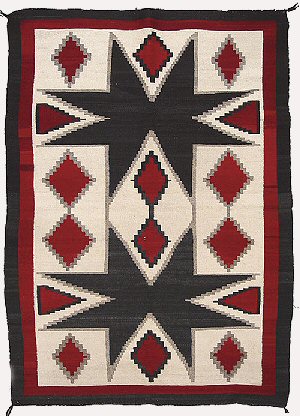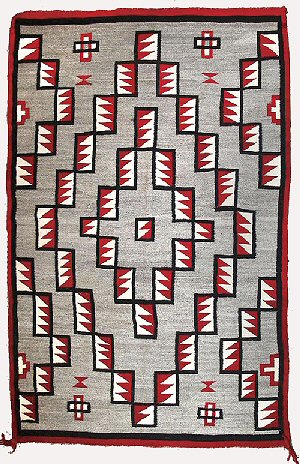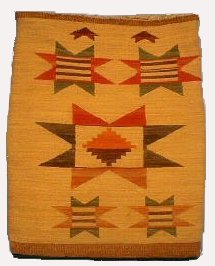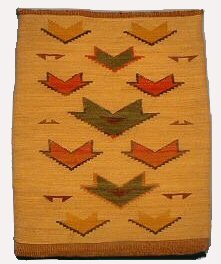|
Photos above: Corn husk bag made by the Plateau Bands c. 1890
Front and Back
Nez Perce Cornhusk Bags
Cornhusk bags developed during the 19th century from earlier root and grass twined bags. Once forced onto reservations the weavers could no longer get their preferred plat materials and began to substitute cornhusk, wool, and cotton twine. Cornhusk bags, despite their name, were actually constructed with a variety of materials, including dogbane, string, and yarn.
The same basic twining technique associated with cylinder baskets was also used to create distinctive flat, wallet-shaped cornhusk bags. Bags, like these were used to transport and store food and were often given as gifts full of cooked tubers or meat to hosts when visiting. Designs on opposite sides are almost always different. Frequently, the motifs vary in size and are placed irregularly, giving the composition a lively, organic feel. There are numerous examples of cornhusk bags that in addition to bold geometric designs have realistic pictorial designs featuring humans, plants, insects, birds, and other animals.
Although often automatically identified with the Nez Perce, all the cultural groups along the Columbia River and throughout the Plateau region made this type of bag. They were traditionally used to store roots The designs on cornhusk bags are always different on each side. Many of these bags were made as prestige items and later became heirlooms and markers of cultural identity, carried by women on special occasions.
Copyright 2005 Traditional Fine Arts Organization, Inc., an Arizona nonprofit corporation. All rights reserved
|





